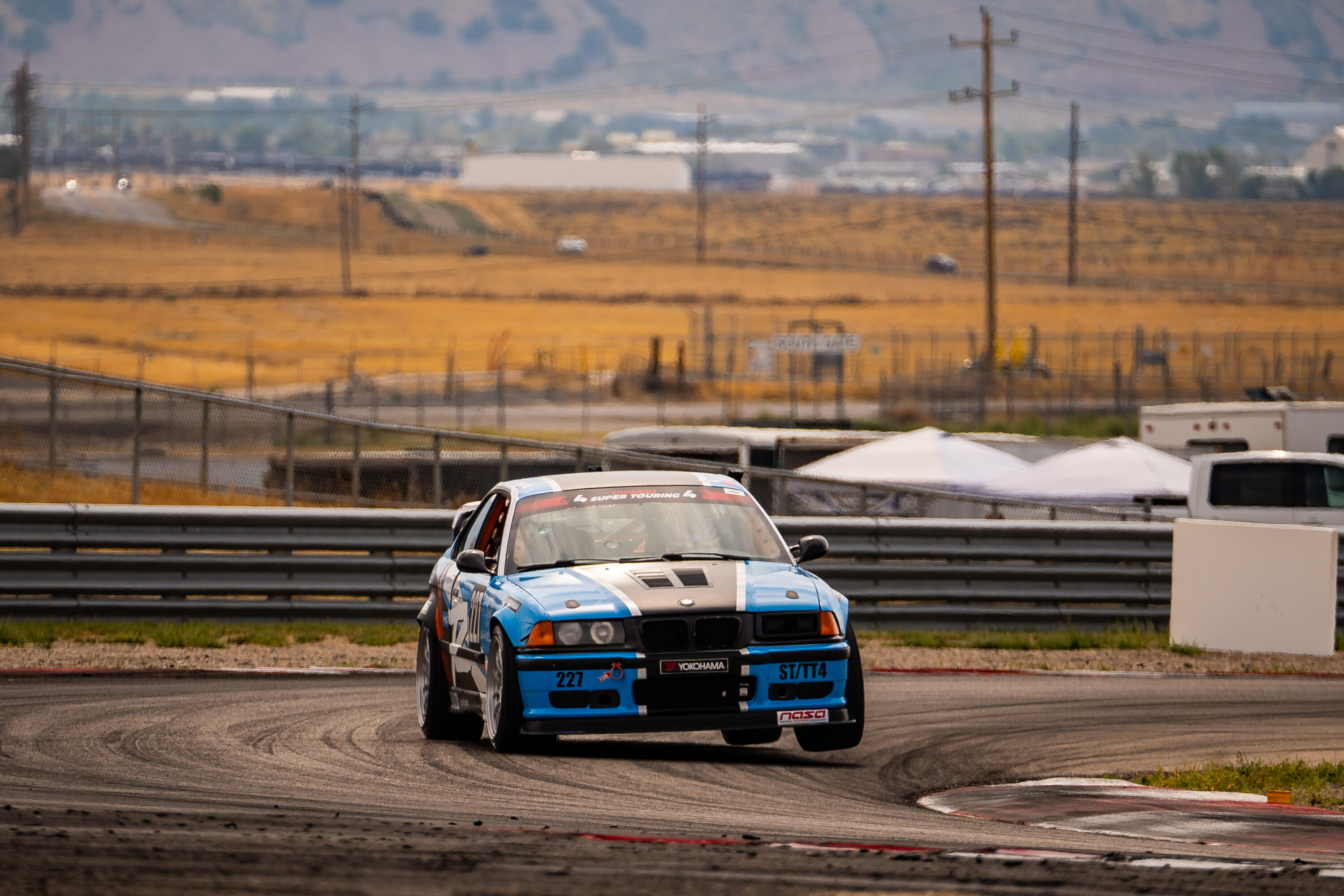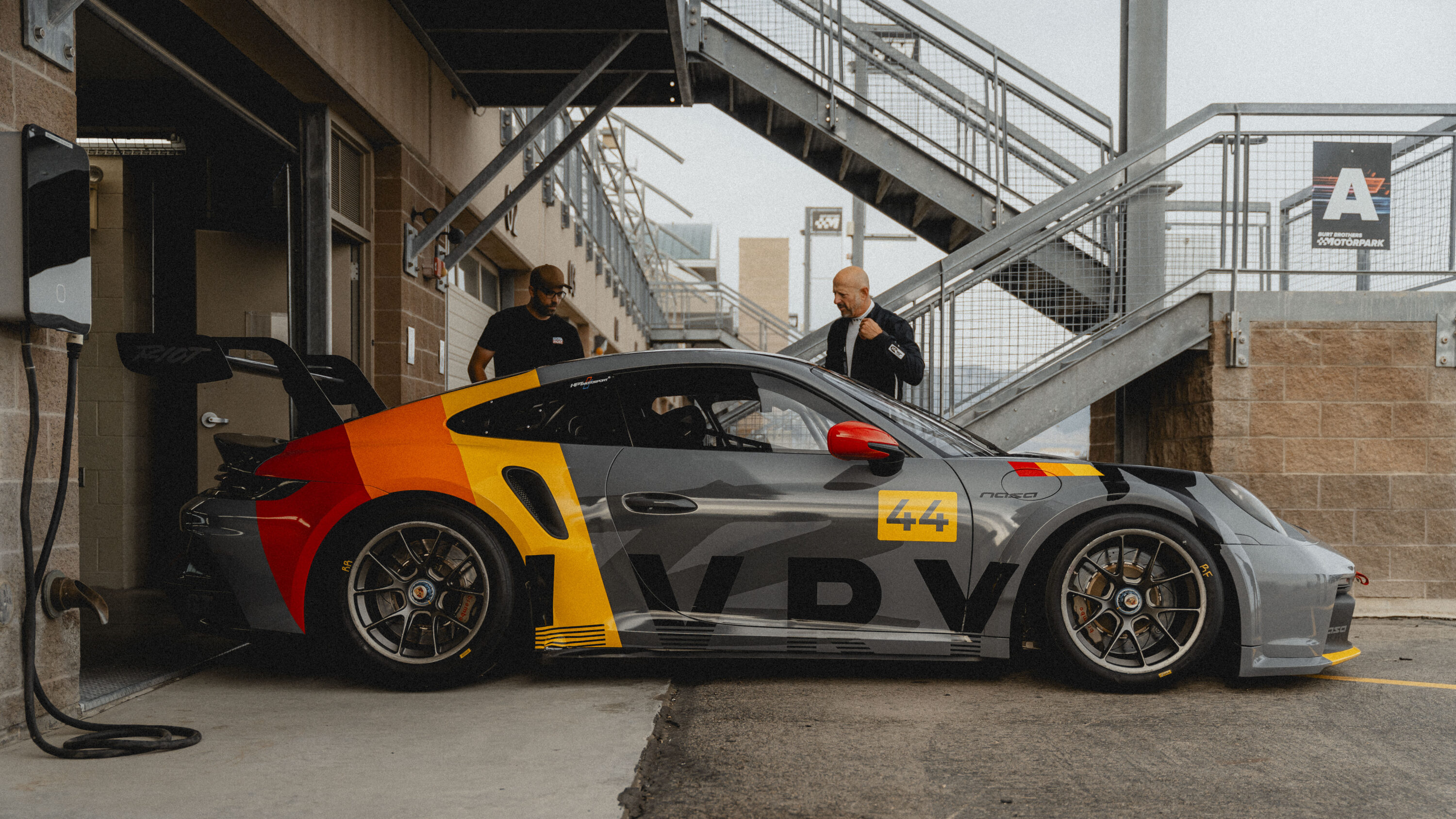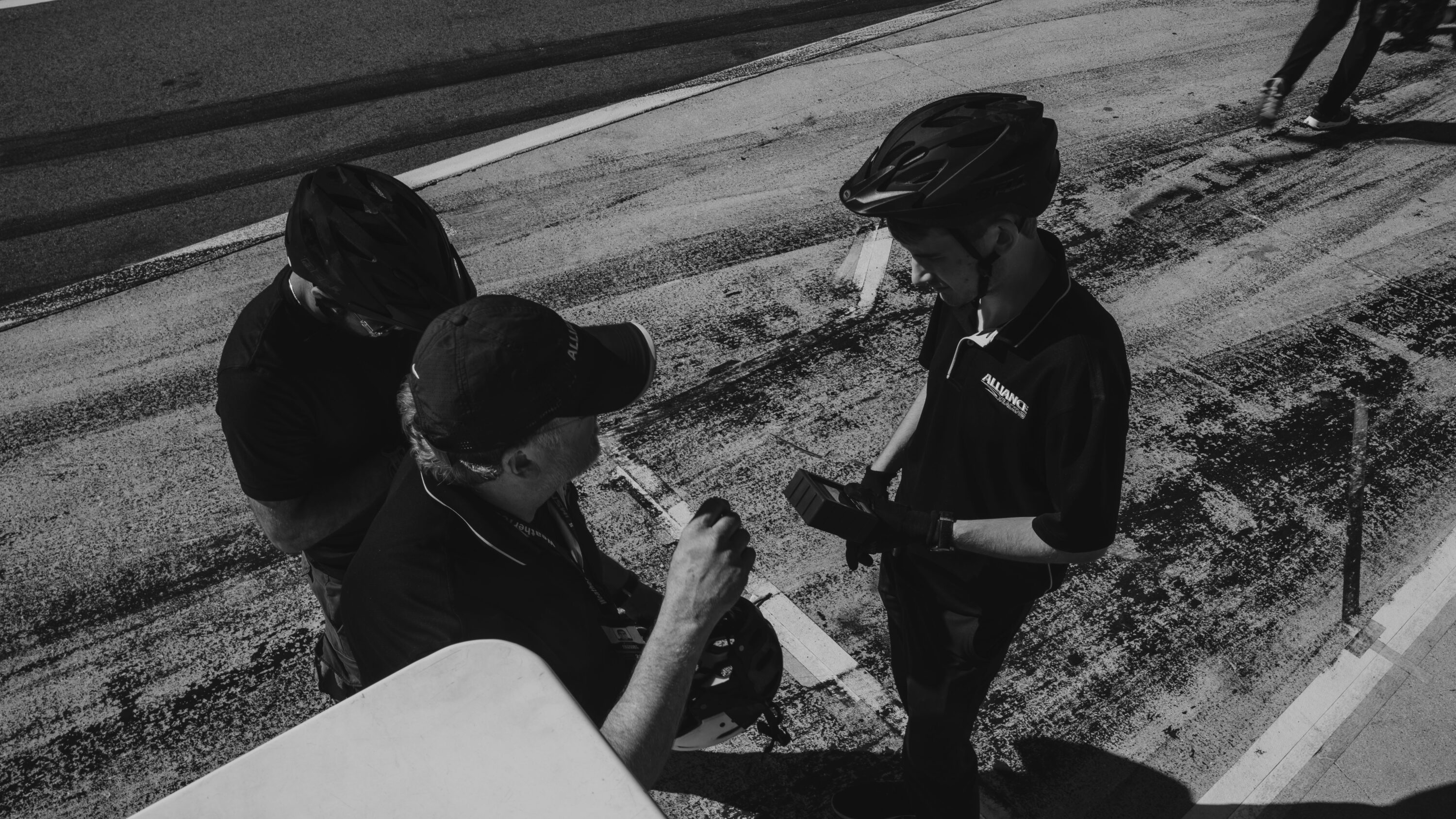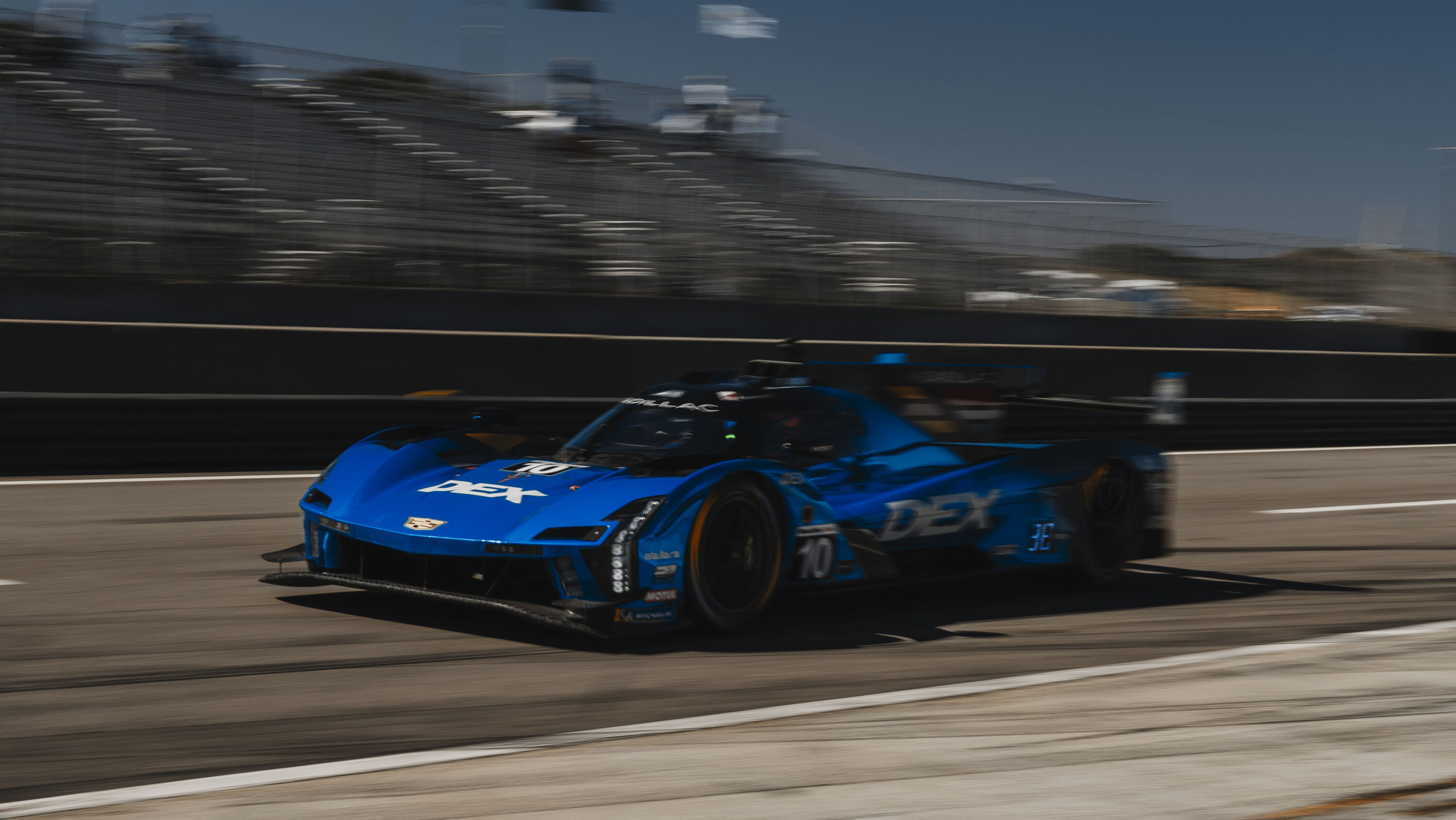Photo Credit: Taco Gunner | Stefen Jones
To trail brake or not to trail brake, that is the question.
Over the past few months, I’ve written a lot about braking into a corner in a way that helps you rotate the car, but it seems I haven’t explicitly explained how to do that. So, here goes: how to deliberately practice and develop your car rotation skills.
First, find a relatively slow corner, one that by definition is going to reward you for getting the car to change direction quite a bit. For example, a hairpin or at least something more than 90-degrees; likely a corner thatʻs taken in a low gear. Ideally, it has a relatively long brake zone leading into it, perhaps a corner that you approach in a high gear.
This is your “rotation practice corner.”
Picture yourself turning into this corner while trail braking – relatively slowly and smoothly releasing pressure off the brake pedal, while increasing the amount you turn the steering wheel. In other words, you’re blending the increase of steering wheel rotation (and, no, this is not what “rotating the car” is about) with the decrease in braking force.
As you do this, your car follows exactly on the arc that you “define” with the steering input; it goes precisely where you expected it to go based on the amount of steering you’ve put in. In this case, your car’s handling is neutral, neither oversteering or understeering.
But you want just a touch of oversteer in the entry phase of the corner to help you turn the car, to rotate it. No, not like a World of Outlaws sprint car, or a Formula Drift car, but just a tiny bit more slip angle on the rear tires than for the fronts.
How do you do that?
You know I’m going to say this: It all comes down to your timing and rate of release of the brakes. Release them too early and the car will not rotate because you’ve unloaded the front tires, reducing their grip level in relation to the rears. Release them too late (too much trail braking), and you’ll overload the front tires, resulting in them losing grip and not turning the car.
In other words, trail braking can help you rotate your car more… or it can make it rotate less! Hey, if this was easy, everyone would do it.
To be clear, let me go over that again:
More load on the front tires (meaning less on the rears) can result in more slip angle at the rear, leading to “deliberate oversteer,” which is one way of thinking of rotating a car.
Too much load on the front tires (again, less on the rears) can also result in more slip angle at the front (because you’re overloading the front tires, asking too much of them), causing understeer – and less, or even no rotation of the car.
And that’s one of the reasons getting just the right amount of rotation is so difficult. Plus – and this is critical – if you simply slow the release of the brake pedal to trail brake longer, you might just take off so much speed that there isn’t what I call “enough energy in the car.” In other words, you’ve over-slowed, and now the load on the front tires is not as much as it should be, and therefore the car doesn’t respond, doesn’t rotate. In fact, the result is… you’re slow.
With that in mind, you might ask, “How, then, do I make my car rotate in a corner?” Thanks for asking.

Back to our practice corner, a slower corner, which will be a tighter radius turn; ideally, it’s a corner with a bit of room, or cushion, in case you spin (but spinning is not common when practicing this).
You’re approaching this second-gear corner at high speed, in fifth gear. You begin braking at the “4” marker, and turn in at the end of the curbing on the right edge of the track. Currently, you’re trail braking, with your EoB (End of Braking) about three car lengths past the Turn-in point. In this example, your car is not rotating: the front and rear tires have approximately the same slip angles. In other words, there is no oversteer at all – the car is neutral.
Okay, that’s your baseline, and it’s time to begin experimenting a little with the goal of inducing a touch of oversteer, or rotation. Again, this rotation is deliberate oversteer – you’re making the car oversteer just a little bit in the first third of corner, the entry phase. By doing so, you’ll help the car change direction so you’re heading in the direction you want to go to get out of the corner quickly!
Think about your braking as a zone, from the BoB (Begin of Braking) to the EoB (End of Braking). Now, shift the entire zone forward, further into the corner, by one car length. In our example, rather than your EoB being three car lengths past the turn-in point, it’s now about four car lengths past. This will increase your corner entry speed, while keeping more load on the front tires. How did the car respond? If it rotated, great. If not, then on the next lap, move the brake zone one more car length later. What does that do?
What you’re doing is experimenting with the initial application, as well as the timing and rate of release of the brakes to find just the right amount of load on the front tires (in relation to the rears), as well as the corner entry speed.
Sure, you could just slow down a bit more when entering the corner, and simply turn the steering wheel more to get the car to follow the line that leads to early and hard acceleration. But then you’d be starting to accelerate from a lower speed. By rotating the car, you can increase your minimum speed, and still get the car to change direction enough that you can begin to accelerate as early and hard as you did at the lower speed – but by beginning to accelerate from a higher speed, your straightaway speed will be higher (or you’ll get to terminal velocity earlier on the straight).
Again, if you begin braking where you always have, but make your EoB later, all you’ve done is slowed the car more. That’s why you have to shift the entire brake zone – from BoB to EoB – further into the corner. If you only delay your EoB, you’ll just over-slow the car and there won’t be enough energy in the car to cause it to rotate.
At the instant you release the brakes (the EoB point), and you have some rotation, you then need to make a decision: do you immediately begin applying the throttle, or do you hesitate for a tiny moment, just long enough to let your car continue to rotate? Now you’re managing the amount of rotation.
Note that I never once recommended or referred to releasing the brakes quickly. I’ve had a driver or two suggest that popping one’s foot off the brakes will make the car rotate. It will not.
There you go, you got it! Well, in theory.
If you’re currently good at rotating the car deliberately by the amount that you want, then reading this may have just reinforced what you already know.
If you’ve rotated the car once or even a few times, reading this could help you do it more consistently.
If you’ve never rotated a car, read through this a few times, then use mental imagery to get this clear in your mind – then find a corner and experiment. Move your brake zone further into your practice corner, and change the timing and rate of release of the brakes until you begin to feel the rear tires slip a tiny bit more than the fronts – until you feel your car rotate.
Finally, a warning: causing your car to rotate is addictive!
– Ross Bentley
/////
Ross Bentley has spent a lifetime helping drivers go faster. He’s the author of the Speed Secrets books (the best-selling racing series ever), is one of the most sought-after driver coaches in the world, and runs SpeedSecrets.com, the largest collection of driver development resources anywhere. Want more articles like this? Subscribe at RossBentley.Substack.com.







